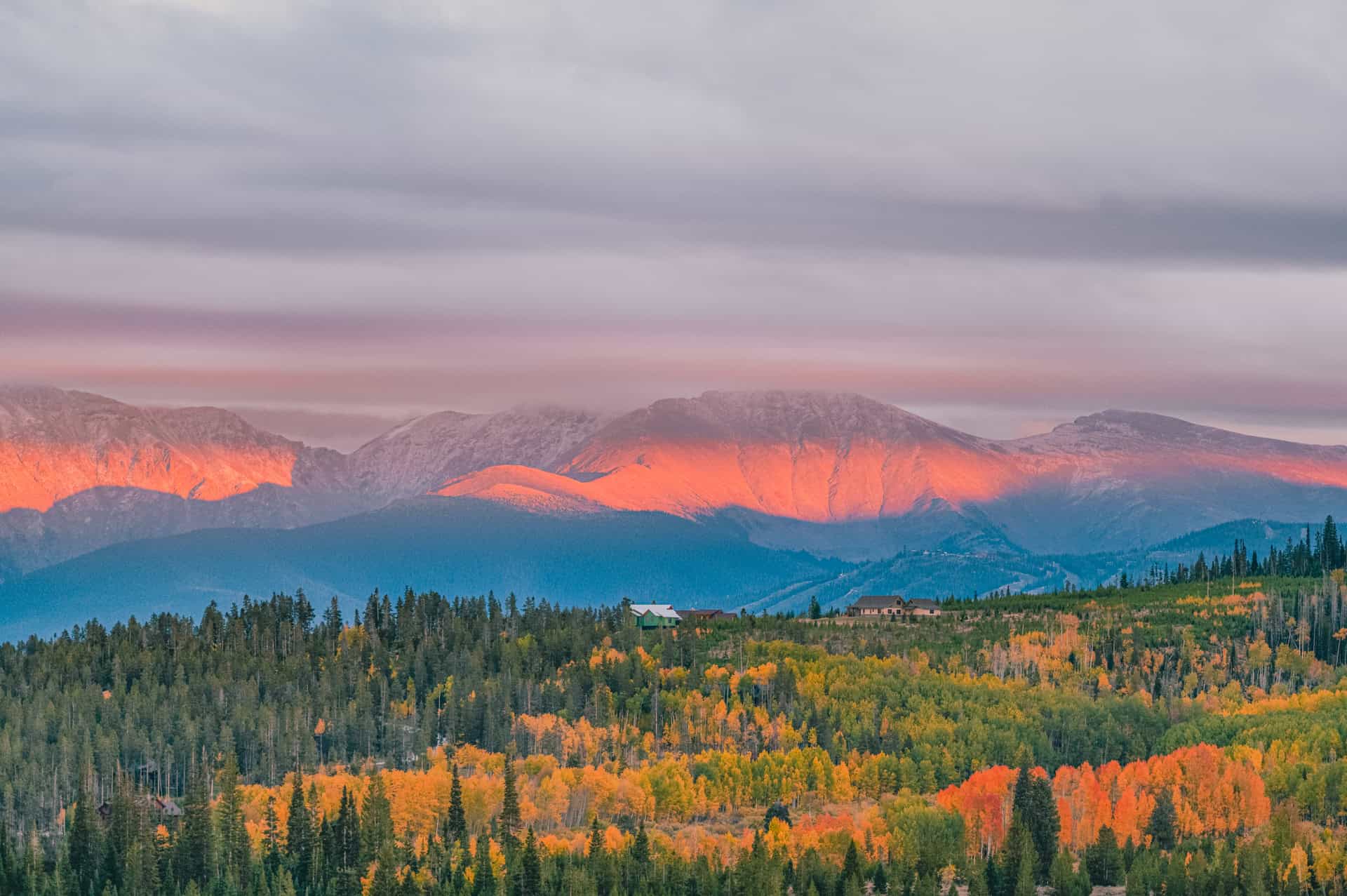Elk Bugling Season in Rocky Mountain National Park

Elk Bugling is one of the top fall experiences in Grand County’s corner of Rocky Mountain National Park. From mid-September through mid-October (and sometimes into November), it is the region’s famous elk-breeding season. During this time, visitors can see hundreds of elk gather amidst the vast vistas in the park for unforgettable sights and sounds. Below, discover more about elk bugling and how you can find the best spots to see it for yourself when you visit Colorado.
Note: Please remember to stay quiet while viewing the elk during bugling season so you don’t disturb or threaten them. Keep the car’s engine and lights off and be sure to keep your distance — if they notice you or move away, you’re too close. Stay on the roadways, follow all posted signage and stay safe. Learn how to Stand Grand and Leave No Trace in Grand County.
What is Elk Bugling?
Elks are the largest, most abundant animals in Rocky Mountain National Park, and the best Grand County location to spot them is the Kawuneeche Valley. Especially during peak elk bugling season in September, it is common in the Kawuneeche Valley to hear males calling — or bugling — in the crisp mornings just before dawn and tranquil evenings before dusk. Visitors should listen for the distinct sounds of different bulls; each bull’s bugle is made up of a series of grunts, high-pitched squeals and “shouts.”

What Does an Elk Bugle Communicate?
Bulls use these bugling sounds to communicate with cows and surrounding bulls about a variety of things. According to The National Park Service,
“Research conducted in Rocky Mountain National Park by Dr. Jennifer Clarke and her students from University of Northern Colorado (UNC) suggests that elk bugles contain wide ranges of information. Some bugles simply communicate that the bull is in the area with his harem. Others communicate to the cows that they are straying too far from the bull or otherwise displeasing him. Still others communicate to other bulls that they are too close to his harem, and that he is willing and able to defend his cows. In contrast, both types of aggressive calls have lower-pitched components in some parts of the call. Elk calls with grunts seem to occur less frequently (about 16% of the time) than calls without grunts. So far researchers have not determined what function the grunts play.”
How to Hear Elk Bugling in the Kawuneeche Valley
If you head north out of Grand Lake and enter Rocky Mountain National Park, you immediately enter the scenic Kawuneeche Valley, where splashes of aspens decorate the winding headwaters of the Colorado River. Always an ideal spot for wildlife viewing, the Kawuneeche Valley is the best and easiest place to spot bugling elk in Grand County's side of the park. It’s also typically much less crowded than viewing areas on the east side.
More About Visiting Rocky Mountain National Park
Looking for more adventures in Rocky Mountain National Park? Check out these resources:
- Plan a Rocky Mountain National Park stargazing adventure.
- Check out this guide to campsites near Lake Granby.
- Get an itinerary for one day in Rocky Mountain National Park.
- Discover six hidden gems in Rocky Mountain National Park.
Photo courtesy of @mt.alseth.
Please click here to view more information about the Annual Meadow closures in place beginning on September 1 for Elk Rut Season In Rocky Mountain National Park
